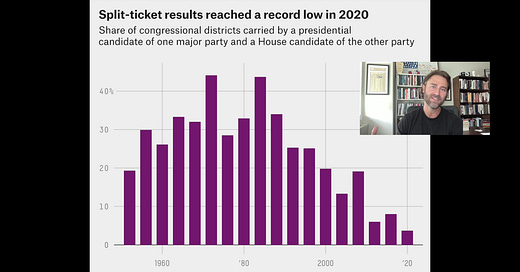Split-ticket voting happens when voters choose candidates from different parties for different offices in the same election—such as voting for a Democrat for president and a Republican for the Senate. This type of voting used to be more common, but in recent years, it’s been on a sharp decline. Straight-ticket voting means casting your vote exclusively for candidates from the same party for all positions on the ballot.
In fact, the 2020 election gave us a 70-year low in the number of districts that voted for one party’s presidential candidate while supporting the other party for their House Representative. This is a clear sign that fewer voters are willing to split their tickets between parties, which reflects growing polarization in American politics. In other words, nearly all of us vote the party, not the candidate, even when we say we do the opposite.
What does this mean for future elections? As fewer people cross party lines, it becomes harder for candidates to appeal to a broad range of voters. This could deepen political divisions and make bipartisan compromise even more elusive.



















Share this post